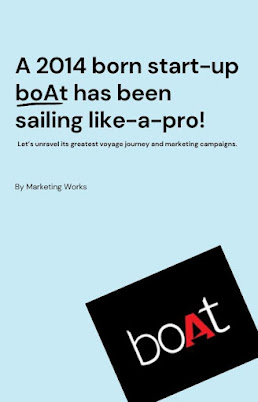“It takes 20 years to build a reputation and five minutes to ruin it. If you think about that, you'll do things differently.”
– Warren Buffet.
We all come across brand everyday be it Nike, Adidas, adobe, Microsoft, Apple, etc etc
but creating our brand and specially our corporate brand is not a piece of cake we all know that and most importantly even a minor branding mistake can make a huge impact to your company's image.
Hence, in order to implement a great brand identity we have to align all the key elements together to gain the best competitive and corporate brand advantage. In this article I have brought to you a case study related to impacts of corporate branding mistakes which you should not do.why? your brand will be only history as the above quotes says.
Disclosure: some of the links below may be affiliate links, meaning, at no additional cost to you, I will earn a commision if you click through and make a purchase. This goes to help support and run All About Commerce and keep the free information flowing.thank you for the support.
lets first have a look on the importance of corporate branding:
As of today we all very well know that there are many perks of having your own brand image you will have customers trust, increased ROI, you will need less marketing efforts and spending because customers will be familiar with your quality of products, your process, etc.. and many more perks.
A color scheme, logo and consistent imagery allow customers, partners and employees to immediately recognize products or company information.
The images help maintain consistency between product lines, version changes and different markets.
The physical identification and characteristics allow customers to easily pick out a company’s product in a crowded marketplace for purchase.
Effective corporate branding helps the “image” of the company stick in the mind of the consumer.
apart from all these there are various other benefits as well but if we come across mistakes then the effects are adverse as well .....hey don't get scared cause everything has a solution right, then what are we waiting for let's get ahead
Importance of alignment of vision, culture, and images in corporate branding.
How British Airways Failed Its Corporate Brand:
At the time of the launch of their first repainted aircraft, BA leaders surely felt they had done everything right: their vision was global, their culture was service - oriented, and their image as “the world’s favorite airline” was ready for expansion to “the undisputed leader in world travel.”
Yet, even though BA had vision, culture, and desired image in good shape, these three essential elements of its corporate re branding program lacked alignment.
First, BA’s culture did not support its vision. Instead, employees, who were being subjected to another round of cost cutting at the time of the new brand launch, interpreted the expenditure of £ 60 million on tail fin painting as a breach of faith. They expressed their anger with a strike symbolically timed to coincide with the unveiling of the first repainted
tail fins, making public the rift between employees and their leaders.
Second, the images key stakeholders associated with BA were
not in line with the airline’s new global vision. BA’s move to
implement its global vision was met with formidable resistance on the part of British conservatives, who constituted the bulk of BA’s lucrative business class passenger pool. For these passengers, on whom BA still depends for the greater part of its revenue stream, BA was an icon of British culture — and they were not ready to share it with the world.
And finally, BA experienced misalignment of its culture and
the global expectations the company encouraged its key stakeholders to hold. This gap was symbolized by the juxtaposition of its global ambition and the British look and feel of its service. As the tail fin program proceeded, it became obvious to passengers, if not to employees, that the airline might be global on the outside, but inside it was still terribly British. From the traditional silver tea service down to the properly stodgy uniforms of the cabin crew, little about the culture encountered inside the airplanes (or the company!) matched the global expectations encouraged by the proud
display on the tail fins.
"Designing Brand Identity is a comprehensive, pragmatic, and easy-to-understand resource for all brand builders―global and local. It's an essential reference for implementing an entire brand system."
- Carlos Martinez Onaindia, Global Brand Studio Leader, Deloitte
- Carlos Martinez Onaindia, Global Brand Studio Leader, Deloitte
you can refer brand identity: An Essential Guide for the Whole Branding Team. Whether you're the project manager for your company's rebrand, or you need to educate your staff or your students about brand fundamentals, Designing Brand Identity is the quintessential resource.
By doing things so badly during the period of its global brand
launch, BA demonstrated the importance of aligning vision, culture, and images.
The lesson the BA example teaches is that the alignment of vision, culture, and images determines the success of a corporate branding effort, not the elements themselves.
Figure above.traces the multiple upheavals BA endured and relates them to continuing misalignment's in vision, culture, and images.
Is this post useful and inspiring to you?
save this PIN to your Branding board on pintrest!
Thank you.
feel free to comment below branding tips and hacks which works for you below to help the readers!













0 Comments